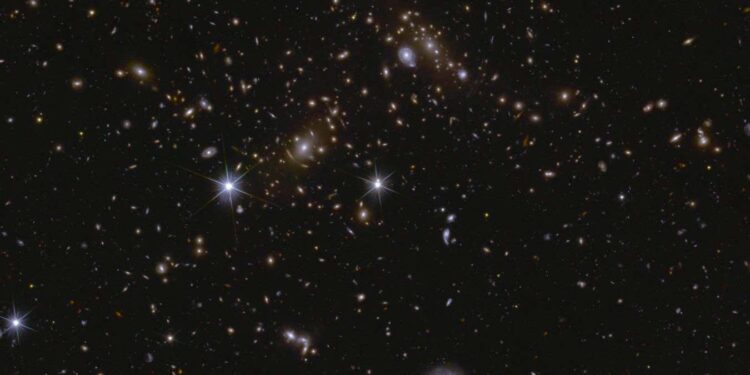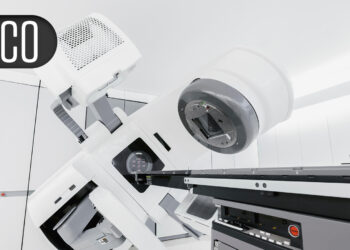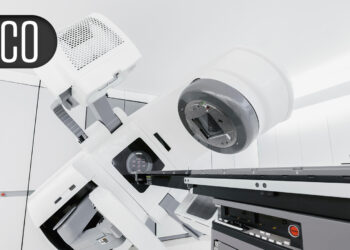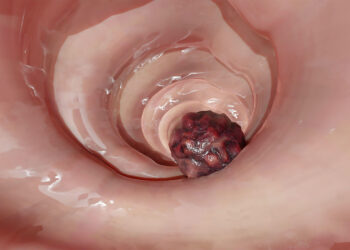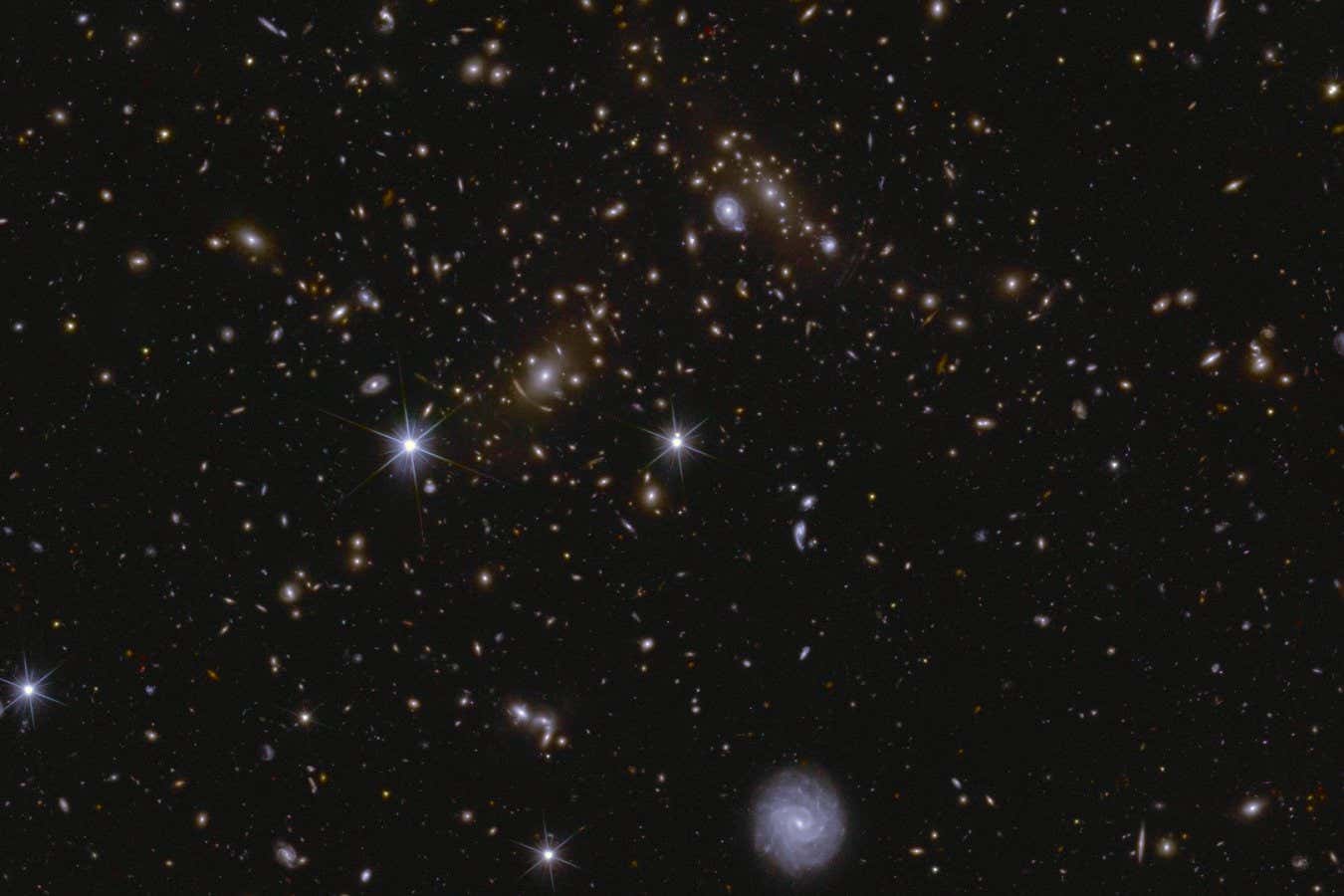
A sea of galaxies photographed by the Euclid space telescope
ESA/Euclid/Euclid Consortium/NASA, image processing by J.-C. Cuillandre, E. Bertin, G. Anselmi
Extraordinary images from the Euclid space telescope have captured 26 million galaxies, some as far off as 10.5 billion light years.
Euclid was launched by the European Space Agency (ESA) in July 2023 and sent back its first images in November that year. During a six-year mission, it will image about one-third of the sky, building the most detailed 3D map of the cosmos ever created. Once complete, this survey will help to illuminate how dark matter and dark energy behave on cosmic scales.
ESA has now released the first large-scale data from this mission, beginning with three “deep fields” – areas where the telescope will peer in more detail than in the rest of its survey area. These three spots represent just 63 square degrees of sky, an area equivalent to that covered by the full moon 300 times over. In the coming years, Euclid will pass over these regions between 30 and 52 times, building up an ever more detailed image.
Will Percival at the University of Waterloo in Canada says the current batch of images is less than half a per cent of what Euclid will gather over the mission, but there is already plenty for researchers to work with. “For a lot of individual galaxies and their properties, there’s so much science you can do, and that’s because nobody has done a space-based survey in the near infrared and the optical like this before,” he says. “It’s not quite the same quality as HST [the Hubble Space Telescope], but it’s very close, and we’re not just pointing and shooting at individual objects – we’re doing a survey.”
Researchers have already used the Euclid data to find hundreds of strong gravitational lenses. These phenomena are formed when the gravity of an object in the foreground distorts light from a distant galaxy, creating an arc shape or even a full ring. Previously, scientists had to hunt these down individually and get HST to point at them and collect more images. Now astronomers can search the survey data from Euclid and find many at once, which will help gather insights into the evolution of galaxies and the universe.
Using an AI model, researchers were able to find and catalogue 500 galaxies with strong gravitational lensing in this first batch of data alone, doubling the total found to date. “The statistics are phenomenal,” says Percival. “Euclid’s going to get 200 times this amount of data in the end.”
The data released so far represents just a single week of images from Euclid, but it adds up to some 35 terabytes – the equivalent of 200 days of high-quality video streaming. The next batch of data, due to be released late next year, will be a whole year’s worth of images covering 2000 square degrees and requiring more than 2000 terabytes of storage space.
Looking at each galaxy manually could take over a hundred years, so AI has been used to massively speed up the process, says Mike Walmsley at the University of Toronto. “We can ask new questions in weeks, rather than years,” he says.
Topics:
Source link : https://www.newscientist.com/article/2471894-euclid-space-telescope-captures-26-million-galaxies-in-first-data-drop/?utm_campaign=RSS%7CNSNS&utm_source=NSNS&utm_medium=RSS&utm_content=home
Author :
Publish date : 2025-03-19 11:00:00
Copyright for syndicated content belongs to the linked Source.

